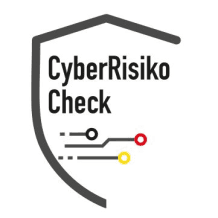What are Deepfakes?
Deepfakes are media content, typically videos or audio recordings, that are manipulated using Artificial Intelligence (AI) to appear realistic and thus distort the truth. Technologically, deepfakes are based on techniques like Generative Adversarial Networks (GANs), which can create images and videos that are indistinguishable from real ones.
How do Deepfakes work?
Deepfake technology utilizes AI and machine learning to analyze vast amounts of footage and audio from a person. With this data, AI can generate new images, videos, or audio content that imitate the target person. A key component of deepfakes is Generative Adversarial Networks (GANs), which include two neural networks: a 'generator' that creates new data, and a 'discriminator' that verifies the authenticity of the data.
Generative Adversarial Networks (GANs)
This artificial intelligence technique is responsible for the realistic appearance of deepfakes. The generator creates new data points, while the discriminator tries to distinguish between real and generated data. Through iterative training, the accuracy continuously improves until the generated content appears convincingly real.
Risks and Threats of Deepfakes
Deepfakes pose a significant risk to society, politics, the economy, and individuals. From fake news to identity theft to reputational damage - deepfakes can be used in versatile and malicious ways.
Political Implications
A greater risk exists in the political sphere, where fake video content can be used to spread misinformation or influence voter opinions. The ability to use deepfakes to create content that attributes words and actions to legitimate political leaders is particularly alarming. This can undermine trust in legitimate sources of information and political figures, and lead to undue influence on election outcomes and public opinions.
Personal Risks
Individuals can also fall victim to deepfakes, particularly through the creation of fake compromising videos that can destroy the reputation of the affected person. This can lead to personal blackmail and profound psychological effects on the victims.
Protective Measures Against Deepfakes
Although deepfakes are becoming increasingly difficult to detect, there are measures that can be taken to protect against their harmful effects.
Education and Awareness
The key to combating deepfakes lies in education and awareness. People should be informed about the technical capabilities and dangers of deepfakes to promote a more critical view of shared content.
Technological Solutions
Technological advancements for detecting deepfakes are also evolving. Algorithms for detecting anomalies in videos and audios, as well as blockchain for verifying the origins of content, could significantly help reduce the spread of fake media.
Legal Measures
A crucial part of combating deepfakes also includes legal actions to sanction the creation and distribution of harmful deepfake content. Legislators worldwide are working to implement laws that regulate the handling of such content.
Conclusion
Deepfakes are an impressive yet threatening achievement in the field of artificial intelligence. The level of realism that has now been achieved makes them a tool with enormous potential for abuse. While they open a new era of creative possibilities, it is essential to take measures to minimize their negative impacts on society and individuals.
🔍
Have your digital content checked for deepfake threats: Act now
📌
Related Terms: Artificial Intelligence, Identity Theft, Media Misinformation




